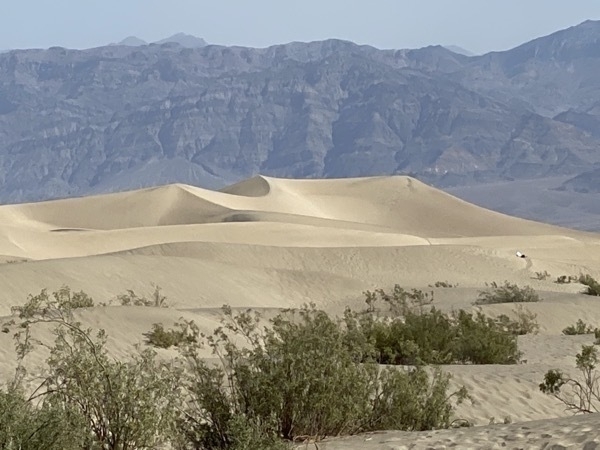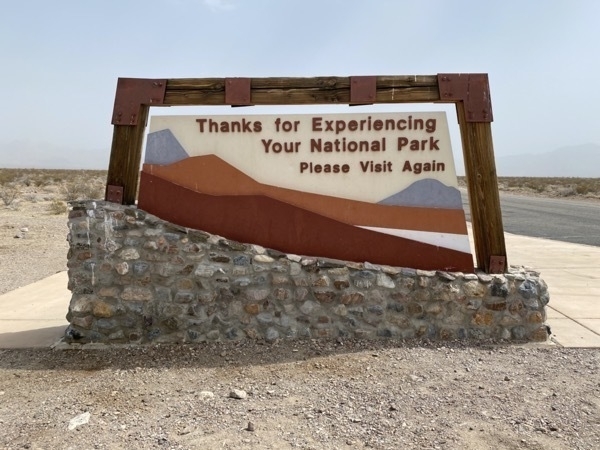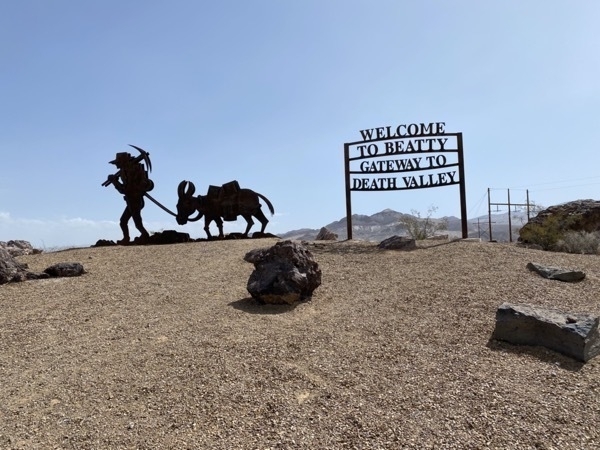Death Valley National Park
This morning we visited our 39th National Park—Death Valley. It was 69 degrees when we entered the park at 9:30 and 101 degrees by 1:00 when we were walking on the salt flats.
Death Valley is the hottest place on the Earth, with a recorded temperature of 134 on July 10, 1913. It is also the driest U.S. national park and features the lowest elevation in North America. Last summer the temperature reached 128 degrees which was the hottest recorded temperature anywhere on Earth since 2013, hence why we planned NOT to go during the summer.
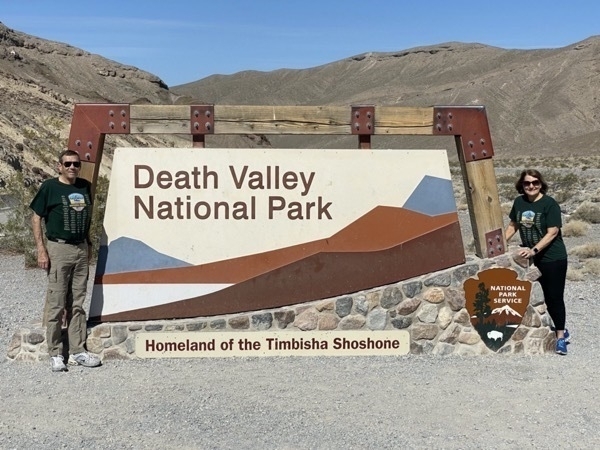
Our first stop was after the welcome sign, of course, was Dantes View, over 5,000 above Death Valley. We took several of our pictures with the Altitude app to record the actual elevation because it ranged from the elevation in this photo of 5,470 feet above sea level to a low of -282 below sea level.
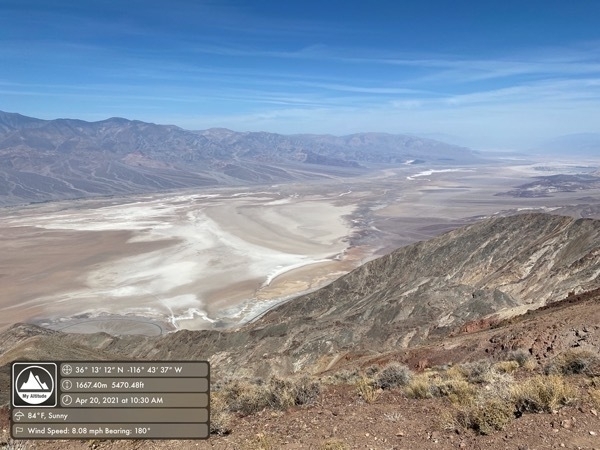
Twenty Mule Team Canyon was our next stop. It is a 2.5 mile one way drive on unpaved roads through the eroded badlands. Several movies have been filmed here including Star Wars VI: Return on the Jedi
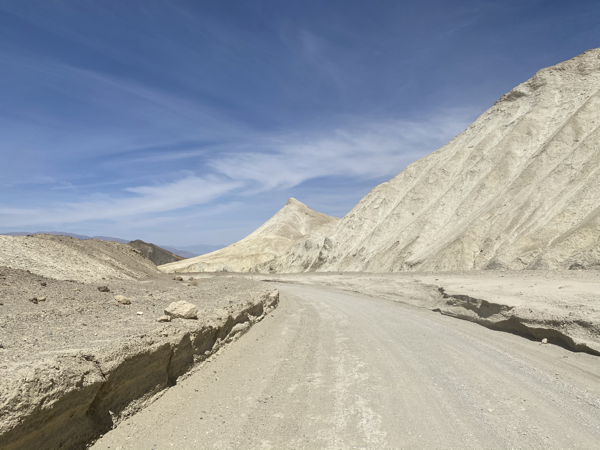
I remember the 20 mule team that was featured in the Borax commercials when I was young. Starting in 1892 Borax was mined here. I had totally forgotten about the product, but can now remember my mom using it in the washing machine to assist in removing stains from of our clothes. If you take the time to goggle uses for Borax, it appears to be a miracle substance for all kinds of cleaning jobs including washing clothes, cleaning the toilet, disinfecting the garbage disposal, and many more (25 miracle cleaning jobs when I googled it).

Zabriskie Point featured golden colored badlands.

We drove down to Badwater Basin, the lowest point in North America, at 282 feet below sea level and walked two miles on the salt flats. The temperature was 101 degrees by the time we arrived. It was a dry heat, of course, but still very hot.
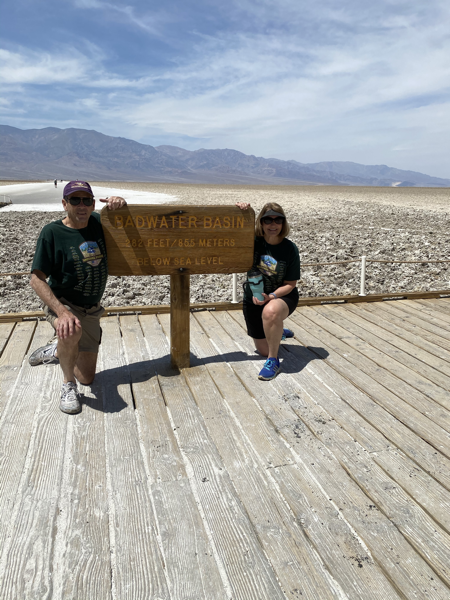
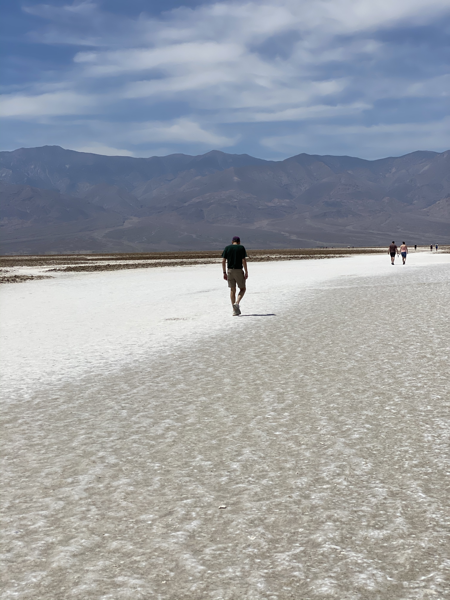
Artist Palette was our last stop for the day.. I was really looking forward to seeing this point, but the colors were not never as vivid in the pictures I took. We were there in the afternoon and I drove back in the evening, so the time of day to catch them must be in the morning as the sun rises.
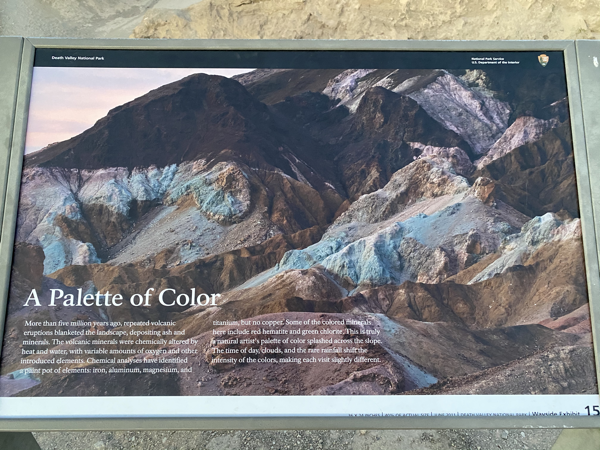
Created by volcanic activity, heat and water this rocks contain iron, aluminum, magnesium, and titanium and depending on the time of day, the colors are very vivid.
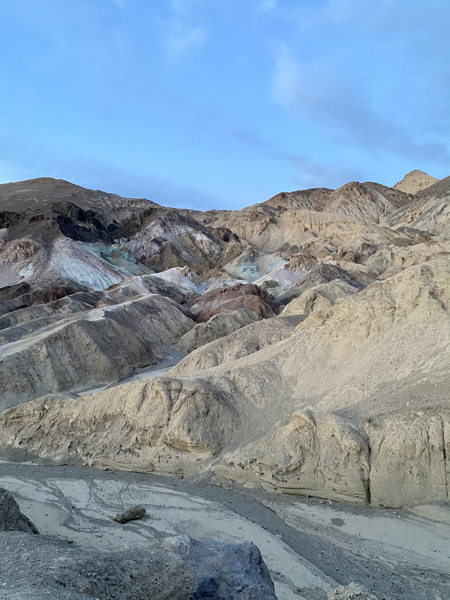
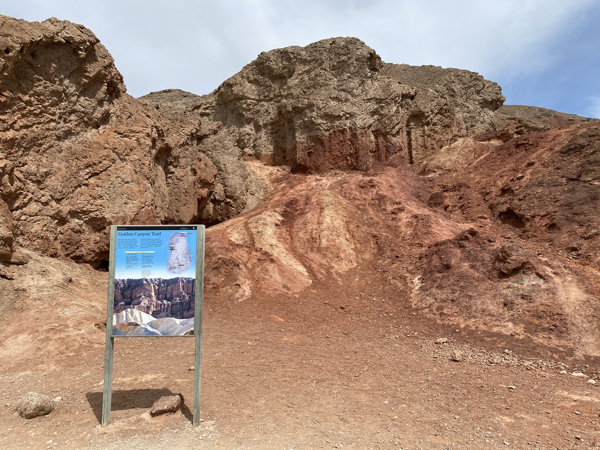
We stopped briefly at Golden Canyon Trail, but we were exhausted by the time we got there, so we walked a short distance and took a couple of pictures.
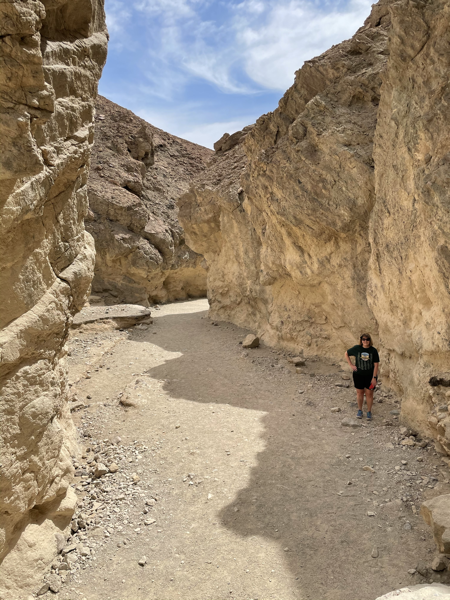
By 2:30 we were back at the Ranch and worn out. The shower felt wonderful!

We are staying at the Ranch of Death Valley at Furnace Creek. We ate dinner in the courtyard of the Forty Nine Cafe. Tom had a filet magnon, asparagus, and a baked potato while I had chili and a Caesar salad. Because of COVID, all meals were served in paper boxes.
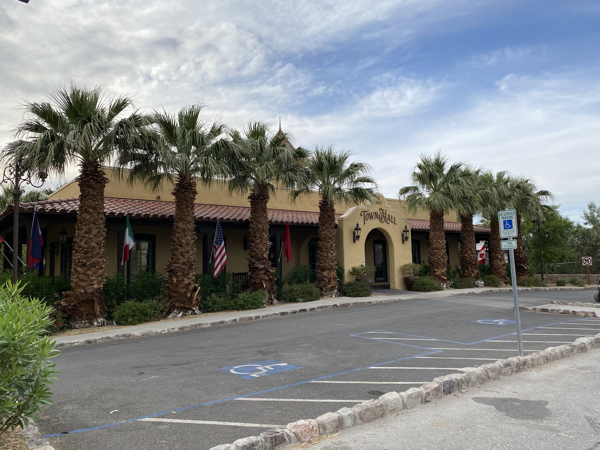
Today was a day well spent enjoying God’s magnificent creations.
Day 2 in Death Valley
After checking out of the motel we drove 22 miles further north to see the Mesquite Sand Dunes. According to the National Park Service "there must be a source of sand, prevailing winds to move the sand, and a place for the sand to collect. The eroded canyons and washes provide plenty of sand, the wind seems to always blow (especially in the springtime), but there are only a few areas in the park where the sand is trapped". The Mesquite Sand Dunes is one area, but there are also four other sights within the park with sand dunes: Eureka Dunes, Saline Valley Dunes, Panamint Dunes and the Ibex Dunes.
